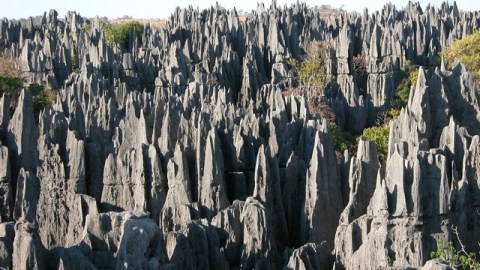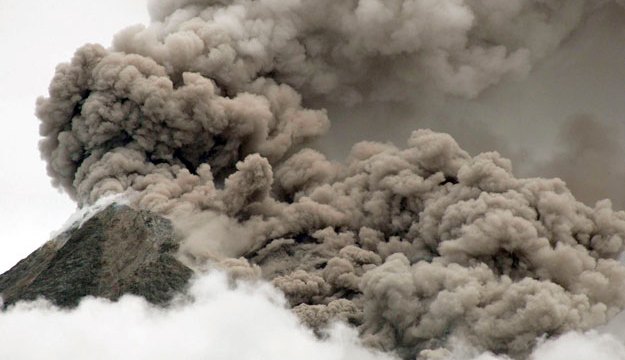Things I’ve learned at GSA 2010: Part 1

I’ve been at the 2010 GSA Meeting for the last day or so and as usual, there is more information that I can handle. However, there is a lot of cool stuff that I’ve heard at talks or read on a poster, so I thought I’d share some with you ~ you can live vicariously through me! I’ve been posting snippets from interesting talks on my twitter feed – @eruptionsblog – you can check it out there too.
San Juan Volcanic Field, Colorado:
Did you know that the Fish Canyon Tuff from the San Juan Volcanic Field in Colorado is the only known VEI 9 eruption on the planet? It is believed to been an eruption that produced 5000 km3 of tuff. A good comparison is imagine the Fish Canyon Tuff as an oil drum and the 1991 eruption of Pinatubo would then scale to be roughly the size of a coffee cup.
Western North America
From 7-44 million years ago, western North America from Oregon to southern Mexico experienced what is called an “ignimbrite flare-up” ~ a time when there was extremely active caldera volcanism. How active? Some estimates I heard here are something like 500-600 active calderas during the last flareup over that 7 to 44 million years ago span that erupted over 1,000,000 km3 of tuffs. The western United States alone has over 200 identified calderas that fall in that range. Rhyolitic tuff weren’t the only product either – there are kimberlites that erupted on the Colorado Plateau as well. This flareup could be related to the subduction of the ancestral (and now non-existant) Farallon plate that was subducting under western North America. This plate is thought to have broken as it was subducting, possibly allowing high mantle heat flow to generate the abundant magmatism.
Kamchatka, Russia
I’ve talked about Kamchatka before, but I heard a good talk that really summarized the recent volcanism in Kamchatka. Some of the fun facts: the location of modern Kamchatka arc is related to islands accreting to the Peninsula in the last 7 million years. There are a number of previously underappreciated large eruptions in Kamchatka, including the ~170 km3 eruption from Kurile Lake at ~7600 years before present whose ash can be found 1,700 km away in northeastern Russia. One interesting observation is that there appears to be cycling of highs/lows of volcanism activity in Kamchatka (and worldwide) over the last ~12,000 years as well.
I’ll have another update tomorrow on some talks about explosive volcanism on other planets ~ and who knows what else I might find out. That is what meetings are for, right?
Top left: Outcrops of the Fish Canyon Tuff, possibly the largest known terrestrial eruption.





